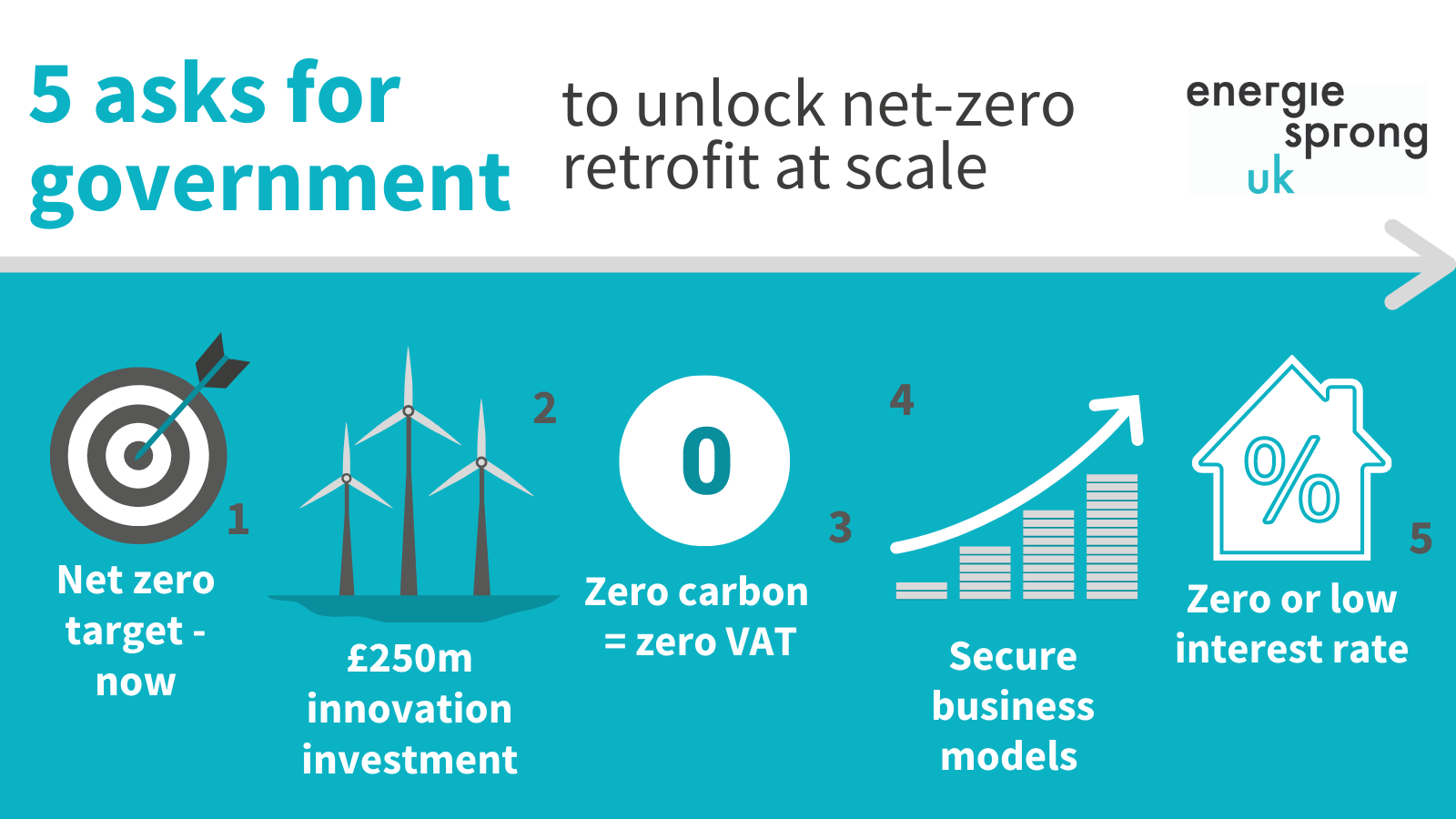Energiesprong UK pilot in the Built Better Now COP26 virtual pavilion
Unlocking net-zero retrofit at scale in the UK: 5 asks of government
As Energiesprong features as an ‘exemplary sustainable project’ as part of COP26, Energiesprong UK outlines their 5 key asks for the UK government that could help scale this innovative approach to whole house retrofit.
Four years ago, 10 homes in Nottingham became the first in the UK to receive whole house retrofits using the Energiesprong approach. Today, this project is being showcased as one of the 17 exemplary sustainable projects in the Build Better Now COP26 virtual reality (VR) online exhibition.
Challenges arose and there were many lessons learned. But NCH2050 Homes – led by Nottingham City Homes and Melius Homes and funded by Horizon 2020 – demonstrates how whole house retrofit can be instrumental in achieving our net zero goals and providing healthier, happier, cheaper-to-run homes for millions. But it can’t happen at scale without 5 key policy interventions.
What is the Energiesprong approach?
Over the last 5 years, we’ve been rolling out the Energiesprong model in the UK – a revolutionary whole house refurbishment and funding approach for achieving net-zero homes. It is designed to unlock in the UK:
- Zero carbon retrofit at scale
- Paid for by energy and maintenance savings
- Delivered by a new high-tech British industry
- Guaranteed actual performance, comfort and costs long term
- Warm, affordable, desirable homes for life
Homes are fully insulated using offsite manufactured wall and roof panels in conjunction pre-assembled ‘energy pods’ providing low-carbon, high efficiency heating, hot water and renewable energy production delivered.
The result is homes that are brought up to a net-zero energy standard, creating warmer, more desirable places to live – financed by energy and maintenance savings. Developed in the Netherlands, 5000 homes have already been retrofitted to net-zero energy with 20,000 homes in the pipeline.
Here’s what we need to make this a reality in the UK
Energiesprong UK’s 5 asks of Government
1. Net-zero target for homes – now
Stepped targets to net zero are counterproductive, resulting in a piecemeal approach that’s costly, difficult to finance and creates stranded investment.
A clear target for net zero homes ensures investment in cost-effective retrofit and industrial innovation, moving away from the poor-quality, low-cost approaches that have given the sector a bad reputation.
The target must include all energy use and generation and be based on actual performance. Energy efficiency measures for vulnerable households should continue.
2. £250 million innovation investment
Offsite manufacture is required to increase volume and pace of retrofit – in addition to many more skilled people, which is already being called for across the industry.
Alongside a clear target, 5 – 7 years of innovation funding following the “commit and review” Offshore Wind Accelerator arrangement, would enable the development of factories, products and processes to decrease unit cost and increase speed of deployment for deep retrofit. This would kickstart and create a self-sustaining market to deliver our 2050 goals without expensive subsidies.
For many years the retrofit industry has been calling for a long-term funding policy. This needs to be split between deployment of existing methods which can alleviate fuel poverty and take us some of the way towards achieving our next carbon budgets, and developing those which will get us to net zero by 2050.
3. Zero carbon = zero VAT
Remove the VAT disincentive for manufactured energy efficiency products to unlock an industrialised approach to net zero and enable a level playing field for all housing providers – all at no net cost to Treasury.
Zero VAT on new build incentivises demolition and new build, which creates more carbon emissions through construction and embodied carbon in materials. The policy was developed to rapidly increase building of new homes. The need to rapidly increase rate of retrofit is acknowledged so now is the time to make the UK VAT policy support this.
Reduced VAT for a ‘retrofit-led renovation’ was also one of the financial incentives outlined in Construction Leadership Council’s recent ‘National Retrofit Strategy.’ This proposed that the Government could “extend a reduced 5% VAT rate to cover all general home improvement works (with some eligibility criteria), provided a certain EPC rating was achieved.”
4. Create secure business models for retrofit
We need to enable landlords to finance deep retrofits through combined rent and ‘comfort plan’ payments that align with energy efficiency grants and tariffs, effectively creating a fair ‘Total Cost of Living’ model for landlords and tenants.
A comfort plan is a package of services for heat, hot water and electricity at a fixed price – providing tenants with a warm, comfortable home at the same price or cheaper than before, while the energy savings are used by the landlord to fund the costs of retrofit.
The Netherlands introduced an Energy Plan policy which gives tenants a guarantee of zero energy bills in return for a fixed monthly fee paid to their landlord. This has been instrumental in bringing forward their 20,000-home pipeline.
5. Zero or low interest rate for net-zero retrofit
Currently, the cost for financing net-zero retrofit in the UK is 2 – 4.5% compared to <1.5% in the Netherlands and 0.75% in Germany.
Cutting this could unlock non-Government investment, stimulating a new high-tech British industry that delivers jobs and growth as well as healthy homes for all. This was also explored by the Bankers for Net Zero’s ‘Retrofit Revolution’ paper in March 2021.
Show your support for scaling up whole house retrofit in the UK by supporting these asks on Twitter and LinkedIn.
To find out more about how the Energiesprong approach could be scaled up to help meet the UK’s carbon emission reductions, please read Green Alliance’s Reinventing Retrofit report.
